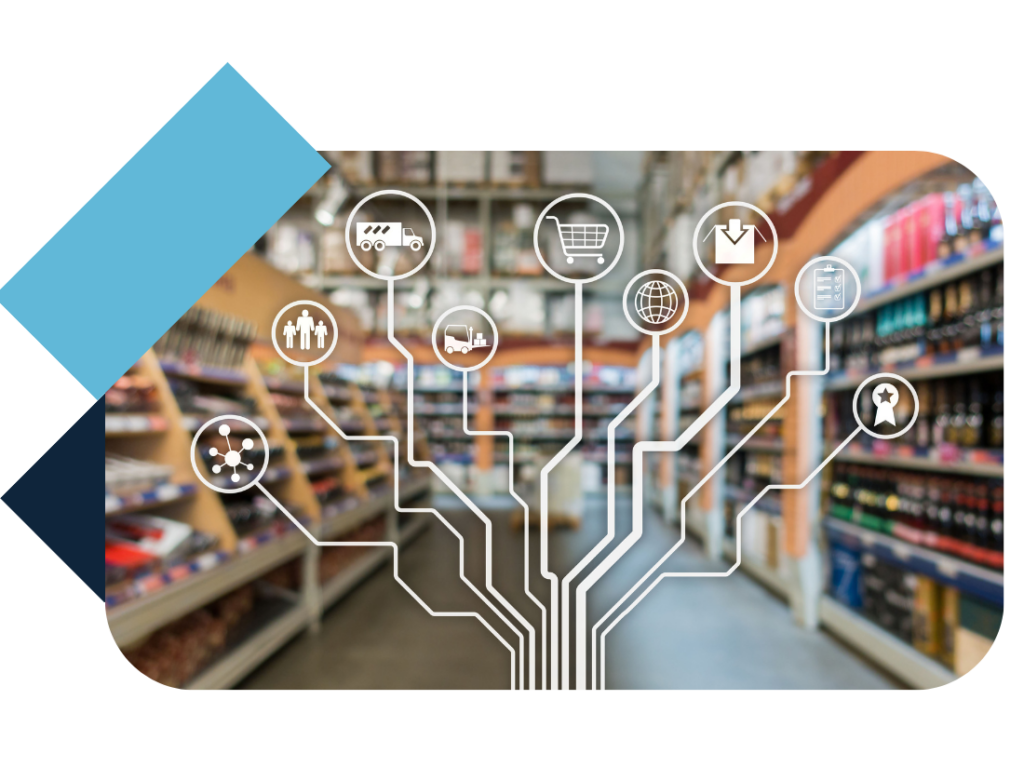How to increase web and foot traffic with online marketing
As 2018 comes to an end, it is clear that businesses that want to grow need to know how to make use of online marketing in order to drive revenue. There are a few online marketing tools that your retail business can use to get people purchasing on your website or through your store’s front door. And what better time is there to start making use of these tools than during the festive season? Or while planning your growth for 2019. Read on for more information on how you can use online marketing to drive web and foot traffic to your retail business.
Why aren’t all businesses using online marketing?
By now most owners are aware of how impactful digital marketing can be but many haven’t started with it themselves. Some of the main issues we hear from businesses when it comes to marketing are:
They don’t know where to start
They don’t know how much to spend
They don’t know if they are spending their money well
This article aims to address these concerns. We start with the easiest/ highest return channels for you to begin with and move on to the more advanced ones.
What’s Covered:
- Making the most of GoogleMyBusiness
- Facebook and Adwords for Retail
- Getting a return on your marketing budget
- Tracking your sales
GoogleMyBusiness listing
Be sure to set up your GoogleMyBusiness listing for both your online and brick-and-mortar stores. Make sure you accurately select your type of business so that when people search for example “shoe stores sea point” – your store location shows up.
Your listing will show up when someone searches for a product you have listed as selling and the searcher is close to your business. It will also show when someone searches for your store name. And don’t worry if you don’t have a physical store location – you can set up your online store as a service area business. You can use keyword research to add keywords to your retail store’s online description. Just make sure you don’t use too many keywords as this is considered “keyword stuffing”. Once a month GoogleMyBusiness will send you updates on the number of searches and traffic generated from your listing.
Add simple posts to your listing to showcase some of your products. Add photos to help give people an idea of what to expect and drive additional feet through the door.
If you are sending to an online website then don’t forget to add UTM tracking code (discussed below) to your links so you can see which sales came through GMB.
This is the one free piece of advertising you can get on Google’s search results so you really should make use of it.
Facebook advertising and boosted posts.
Although Facebook often has lower ROI than Google Adwords it is much easier to get started with as most people are used to creating posts on the platform already. Deciding to start with Facebook or Adwords is, therefore, a tough decision to make – if you have the time/ money to invest in getting Adwords set up properly then this is definitely the recommended starting point.
You can, however, start by using things like boosted organic posts and posts on Facebook’s Marketplace. As people are using this more and more to search for products it is becoming a really good and free option for getting your product in front of people. This works particularly well for niche/ local products.
You can also create posts on your page and boost these to people you want to target.
Make sure to use good quality, clear photos and have a clear call to action e.g. Buy it online, or get it in-store today. In order to not waste money, it is important to think carefully about your tracking and your targeting.
For targeting Facebook allows you to specify:
Location – you can drop a pin and specify people within a certain distance from your store
Age
Demographics including education level, parental/ relationship status
Interests include business, entertainment, family, fitness etc.
Behaviours – the device used, anniversary, consumer classification (people who prefer high-value goods etc)
And of course, whether someone has liked your page
You can dig into these and see what works for you. You can also upload email addresses/ cell phone lists and use these to target people.
For driving traffic to a store make sure you are using location targeting. Facebook allows you to drop a pin at your store location and target within a radius of this. This allows you to create very local messaging around a store location. Even better because people’s locations are tracked via their phone location you can track how many people actually make it to your store using store visit campaigns.
For traffic, to websites, we suggest adding UTM tracking (you can read more about this below) in order to verify Facebook numbers using your google analytics account.
Google Adwords
Google Adwords allows you to reach people who are searching for the kinds of products you offer. While opening and managing an account full-time can be time-consuming – it is a great way to drive direct sales for your business. Learning how to use it and setting it up to get the best return requires some experience and many businesses use agencies to help with this. Google does offer online training in the form of videos and tutorials and you can reach out to the Google Adwords support team when creating your first campaign. Neil Patel has written a great introduction here. As he says investing in Adwords spend is an investment in your business and most businesses spend huge budgets here and receive a very good return.
The main form of targeting on Google Adwords is keyword targeting. You select the keywords that apply to your business e.g. +mens +adidas, [mens running shoes] etc and use these to show your ad in front of people searching for what you offer. Match types on your keywords allow you to say how closely a search must match your selection. You can overlay this with many other types of targeting including radius location targeting for physical stores.
Google Adwords is a phenomenal channel for getting a return on ad spend (ROAS), particularly for e-commerce stores as it allows you to match how much you pay for traffic to how much you earn from it fairly easily.
For retail, shopping campaigns can be particularly useful as they let users view your products before clicking through to your site.
Working out what to spend and how much to pay per conversion
Conversions are the actions you consider valuable and that you want site visitors or people to complete in order for you to make money. For an online store, this would be purchasing an item. In this instance, it is fairly easy to work out how much you want to pay for each conversion. You can work out how much of your profit margin/ per good you are willing to pay to make a sale.
Things get a bit more complicated with a campaign like a store visit campaign. You need to factor in the likelihood that someone visiting your store will buy something. This can be an immediate purchase or one in the future. You can also factor in lifetime value if you have an idea of how often a customer generally returns and how much they spend. Even a rough figure allows you to say that your marketing is working for your business or allows you to see if it is too expensive the current way that you are implementing it, or in your businesses current format. Both marketing and your business can be optimized to make your marketing spend more profitable but we won’t get into that here.
What you do need to do to be able to judge this is to use tracking – either UTM for GoogleMyBusiness, email, and social sites. Or conversion tracking for Google Adwords, Facebook, and other social sites. Google Adwords must be directly linked to Google Analytics. Other social sites and other platforms require additional UTM tracking.
Conversion tracking pixels can be found in all the various platform interfaces and should be implemented on your conversion completed page e.g thank you page.
Tracking and working out your return on ad spend (ROAS)
In all marketing tracking is vital. This lets you see:
- What marketing works for you
- How much revenue is generated by what marketing channel
- Where you can put more money and still grow profitably.
You can then use this to work out your cost per sale, and how much money you make for each channel vs how much you spend on it (In marketing we call this Return on Ad Spend (ROAS), or Return on Investment(ROI)).
Tracking Your Online Marketing
For websites – Urchin Tracking Module (UTM) codes
What is it?
This is a tracking string added to URLs that send traffic to your site. E.g. the bold sections in the URLs below:
www.mywesbsite.com/?utm_source=googlemybusiness&utm_medium=mainlisting
www.mywebsite.com/?utm_source=facebook&utm_medium=boostedpost&utm_campaign=blackfridaysale
What does it do?
It allows you to see where your website traffic comes from and to calculate the return on your ad spend from different campaigns.
What do you need to use it?
- A google analytics account is correctly setup (including e-commerce and/or goal tracking)
- Tracking code which you can easily generate using Google’s URL Builder.
- Add this code to all your posts e.g. for Facebook, GoogleMyBusiness, and emails you send out.
This way you can analyse the traffic from each platform and see how much revenue they are driving on your website. This will allow you to pull back or invest more in different channels.
Conversion pixels, tracking codes, and Google Analytics
So far we have discussed :
tracking using UTM codes in order to know where traffic to your site is coming from and
store visit tracking on Facebook.
Linking Adwords direct to google analytics
In addition to these if you have a website you will want to add Facebook, Google Adwords and Google Analytics tracking to it when you use these channels.
These codes will tell you what your traffic is doing once they get to your site.
Google Analytics can tell you which pages they visit and how long they are there for.
In order to know more, you need to set up goals/ e-commerce tracking in google analytics and conversion tracking from the various platforms you advertise from (Facebook/ Adwords etc). Setting up google analytics correctly to track e-commerce sites can require professional help in order to track through your payment gateway. Adwords and other platform conversion tracking need to be placed on your goal-completed pages. For retail, this is generally the page someone reaches once they have completed a purchase. It may also be a view store location page.
With a conversion pixel, you’ll enter a pixel code into the backend coding of a specific page on your website. For example, the page after someone has made an online purchase and you’ll be able to track where that lead came from, whether it was Google AdWords or social media. This way, you can tell which medium is driving more conversions and the type of content or search terms that caught the buyer’s attention.
Online marketing is incredibly important, especially for retail stores during the festive season. So, increase your revenue by using these tips.
If you’d like to read more about taking your retail business to new heights, have a look through our blog page where we have plenty of other useful, actionable suggestions.
Stacey Vermaak
Chief Marketing Officer, Lulalend
Performance marketer who is passionate about helping businesses grow.



